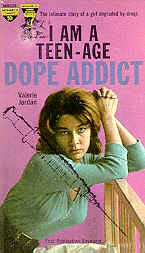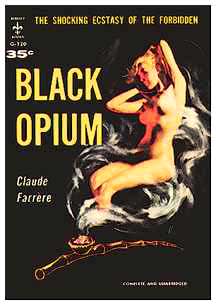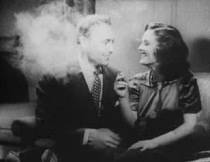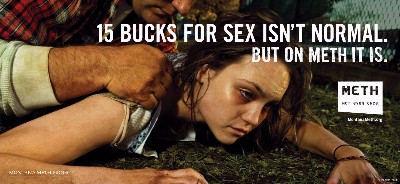|
5. The Drug Is Associated with the Moral Corruption of the Young,
Particularly Their Sexual Corruption

|
|
"You're in paradise until the blast wears off
and you've got to face reality again:
you're hooked, chained, a teenage dope addict."
|
Chemicals have long been inextricably linked in
prohibitionist literature with the sexual corruption of young
people.
 Joan. Fran. Rauch attacked chocolate in 1624 as a violent
inflamer of passions.
40
Tobacco was linked with sexual immorality in the
1850's,41 and
the association between opium and the corruption of young women
began in the 1880's with the publication in 1882 of H.H. Kane's
Opium Smoking in America and China in which Kane states:
Joan. Fran. Rauch attacked chocolate in 1624 as a violent
inflamer of passions.
40
Tobacco was linked with sexual immorality in the
1850's,41 and
the association between opium and the corruption of young women
began in the 1880's with the publication in 1882 of H.H. Kane's
Opium Smoking in America and China in which Kane states:
|
"Many females are so much excited sexually by the
smoking of opium during the first few weeks that old smokers
with the sole object of ruining them have taught them how to
smoke. Many innocent and over-curious girls have been thus
seduced."42
|
It has already been outlined how cocaine was extensively
associated with sexual attacks on white women by black men
during the early 1900's. During the alcohol prohibitionist
movement era alcohol was reported to create sexual excess within
and outside of marriage, and alcohol was subtly webbed through
stories of Jews "buying up the virtue of Gentile
virgins" or Roman Catholic priests "seducing
Protestant girls in nunneries."43 In an
expose of the white slavery traffic written in the 1930's, we
find the arch villain (the alleged pimp) responding to a
question on how he procures women for the life of prostitution:
|
"I secured a large number of girls from high schools,
by doping them with my weed." 44
|


There is an added irony on the above theme that occurs as one
reads through the prohibitionist literature from different
periods. Nearly every drug that has been singled out for
prohibition (opium, cocaine, alcohol, marihuana)
has been said to provoke uncontrolled sexual desire and provoke
sexual attacks upon defenseless women while at the same time
the drug is said to produce impotence.
The media coverage of the numerous lifestyle changes of the
1960's constantly associated drugs with communal living,
cohabitation, etc. Pictures of teenage girls allegedly
prostituting to "support their habits"
blazened
across the television screen did nothing but update this age old
association between chemicals and sexual corruption. The
inflaming of this fear about the fate of our own children made
it difficult if not impossible for most Americans to take a
careful and reasoned look at our drug policies.

|